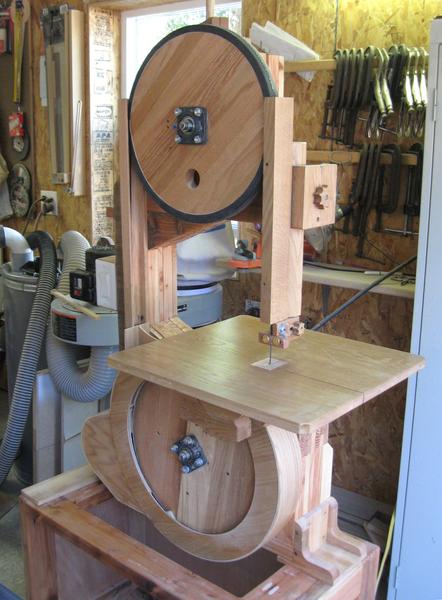
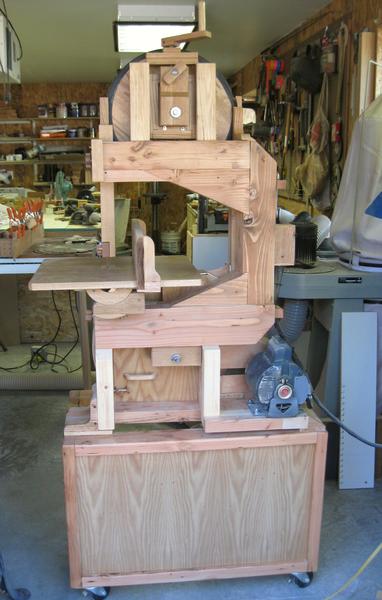
Lee Zimmer writes:
Hi Matthias,
I am one of your many fans and your website is my favorite. I decided last year to attempt to build some of your creations. The first thing I built was your 16" bandsaw. It didn't wind up looking like yours exactly. I built the frame from old barn rafters and the rest from glued up oak pallet wood pieces. When it was finished I liked the look of the exposed wood so much, especially the wheels, I couldn't cover it up so I just built modified blade guards.
Then I built your pantorouter which I have used extensively for making box joints for drawers that are going into my new shop desk.
And today, I finished your tilting router lift.
Thanks Matthias, I have wanted a woodworking shop for a long time. Now that I have one I can enjoy the remainder of my retirement populating it with your creations.
Matthias comments:
Those wheels sure look nice. Examining the pictures closely, I realized they
are made of solid wood (not plywood).
That's something I generally recommend
against because of the seasonal expansion and contraction with
humidity changes which could make them non-round.
I asked Lee how his wheels did. His response:
The reason I used solid oak wheels is because that is the material I had on hand and it was free. One of the things that impresses me about you and your approach to woodworking is your attitude towards simplicity and economy of resources. Being retired, I am all for those things. It is fun to build a useful tool or jig from scavenged materials.
Your point about seasonal expansion and contraction of my solid wheels is well taken. However, I had the foresight when we built our home and shop to heat it with radiant floor heat. My shop temperature stays between 60°F and 75°F year round so I think that may mitigate the potential shrinkage and expansion problem a little.
Matthias comments:
Sorry to be the pedantic wise guy, but heating up cold outside air is actually what causes
a drop in relative humidity. Air's ability to hold water roughly doubles
for every 10°C or 20°F increase in temperature. So if air is at 100% relative
humidity at freezing, once heated up to room temperature, only has about 25%
humidity relative to its increased ability to hold water.
That's why we heat air up when we want to dry stuff. Much more about this
on the Wikipedia page

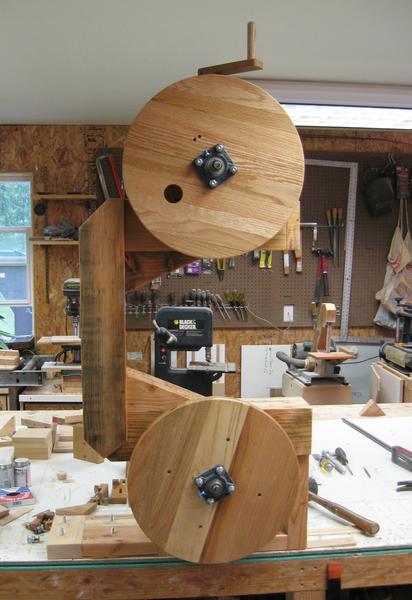
The frame is made from resawn pine barn rafters. The remainder of the parts including the wheels are made of oak pallet wood. I used 5/8" diameter flange bearings for the wheels.
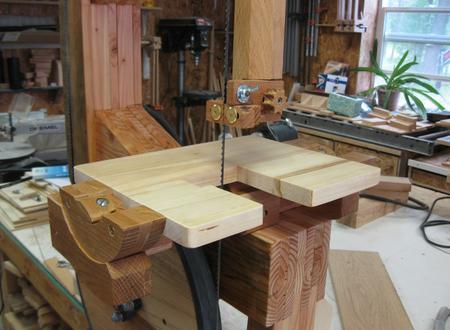

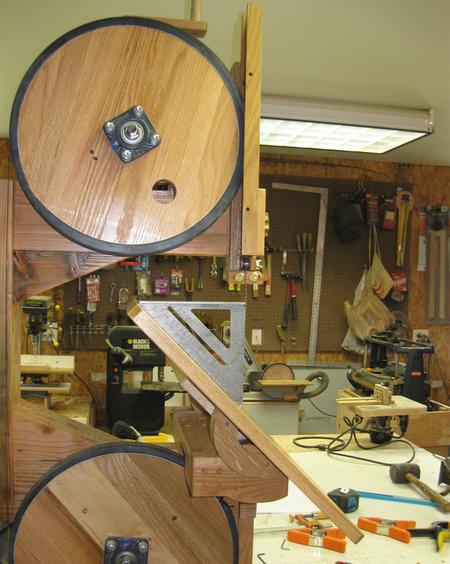 Where you used sheet metal
from an old computer case as a blade guard, I made mine out of oak. My
reasoning was that if the blade did come off, there should be less of a chance
of being ruined if it hit wood. I'm not saying my reasoning is solid,
but the blade has come off a couple of times while adjusting it and me
and the guard survived.
Where you used sheet metal
from an old computer case as a blade guard, I made mine out of oak. My
reasoning was that if the blade did come off, there should be less of a chance
of being ruined if it hit wood. I'm not saying my reasoning is solid,
but the blade has come off a couple of times while adjusting it and me
and the guard survived.
The tooth brush sawdust remover is low tech but it works. The belt guard, and guard around the bottom wheel is made from 3/16" plywood. The stand is made from more of the barn wood and the 3/16" plywood. The saw just free stands on its base. I still need to build a drawer to catch the sawdust and another one or two drawers for storage in the base.
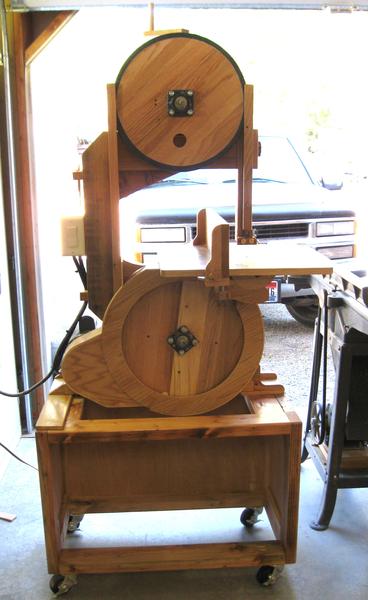
Lee Zimmer has uploaded a lot of photos of the construction on to Photobucket.com:
http://s1263.photobucket.com/albums/ii625/luv2learn3/Bandsaw%20Build/
Lee also posted about the project on lumberjocks.com:
http://lumberjocks.com/projects/62822